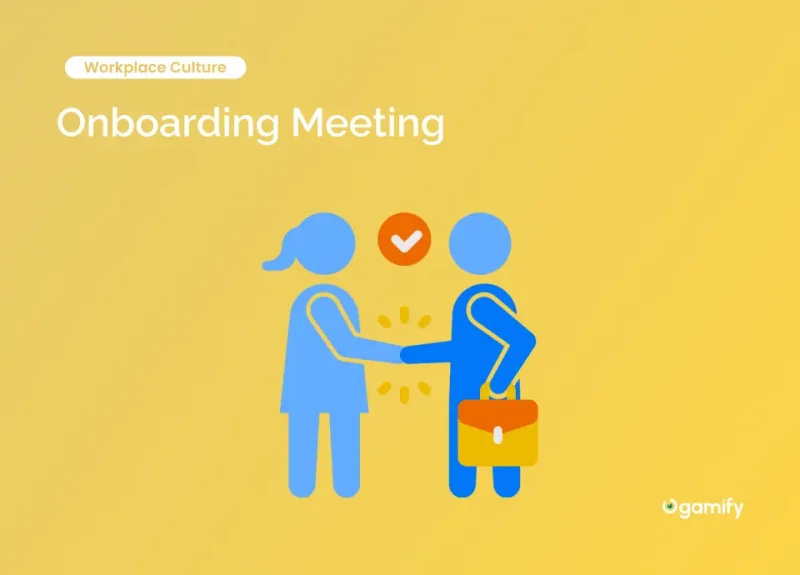Welcome to the exciting world of onboarding meetings! As a crucial step in integrating new employees into your company, a successful onboarding meeting sets the tone for their entire experience. This article will provide you with 7 essential tips to ensure your onboarding meetings are not only productive and informative but also engaging and memorable. Let’s dive in!
What is Onboarding Meetings?
Onboarding meetings, also known as orientation meetings, are structured sessions conducted by companies to welcome and introduce new employees to their workplace. These meetings aim to provide essential information about the company’s culture, values, policies, and procedures. The goal is to make new hires feel comfortable, informed, and excited about their role within the organization.
During onboarding meetings, new employees get the chance to meet their team members and supervisors, receive necessary training, and gain insights into their specific roles and responsibilities. It is a critical step in ensuring a smooth transition for the newcomers, setting them up for success in their new positions.

What is the Onboarding Process?
The onboarding process is a comprehensive approach used by companies to integrate new employees into their work environment successfully. It goes beyond the initial onboarding meeting and typically spans the first few weeks or months of the new hire’s employment.
The onboarding process involves various activities, such as:
- Orientation and Welcome
The first step is to welcome the new employee to the organization formally. They are introduced to the company’s mission, values, and history. They are also familiarized with the office layout, facilities, and the company’s organizational structure. - Training and Skill Development
During this phase, new employees receive job-specific training to equip them with the skills and knowledge required for their roles. This could include technical training, software orientation, and soft skills development. - Integration and Team Building
To foster a sense of belonging, new hires are integrated into their teams. Activities like team-building exercises, social events, and mentoring relationships are encouraged to help them connect with their colleagues. - Performance Feedback and Evaluation
Throughout the onboarding process, continuous feedback is provided to new employees to help them understand their progress and areas for improvement. Regular evaluations ensure they are on the right track and feel supported.

4 Phases of Employee Onboarding
The employee onboarding process can be broadly divided into four key phases:
- Pre-arrival Phase
This phase begins as soon as the employee accepts the job offer. HR teams communicate essential details, such as the start date, required paperwork, and initial orientation schedule. This phase helps new hires feel welcomed and prepared for their first day. - First Day Onboarding
The first day is crucial for making a positive impression on the new employee. It involves completing paperwork, introducing them to their team, and giving them an overview of the company culture and expectations. - Initial Weeks
During the initial weeks, new employees undergo comprehensive training and start taking on tasks related to their role. They become more familiar with their responsibilities, team dynamics, and company processes. - Ongoing Onboarding
Onboarding doesn’t end after the first few weeks. Ongoing onboarding involves continuous support and mentoring, ensuring that the new employee feels engaged and confident in their role as they integrate further into the company culture.

Onboarding Agenda
A well-structured agenda is the foundation of a successful onboarding meeting. Before the meeting, carefully plan the topics you want to cover. Create a clear timeline, including breaks if necessary, to keep the meeting on track and avoid overwhelming your new hires.
Introductions
Start with a warm welcome and brief introductions. Allow the new hires to introduce themselves and encourage team members to share fun facts about themselves. This fosters a friendly atmosphere and helps break the ice.
Company Overview
Provide an overview of the company’s history, mission, values, and goals. Help new employees understand the bigger picture and how their role contributes to the organization’s success.
Personalize the Experience
Each new hire is unique, so consider personalizing their onboarding experience. Tailor the training to their specific role and responsibilities, and assign them a buddy or mentor who can guide them through the first few weeks.
- Department-specific Training
Offer department-specific training sessions to familiarize new hires with their team’s functions, workflow, and key projects. This enables them to comprehend their role’s significance within the team dynamic. - Individual Goal Setting
Encourage new employees to set personal and professional goals. Discussing their aspirations helps create a sense of purpose and commitment to the organization.

Engage Through Interactive Sessions
Onboarding meetings don’t have to be all about presentations. Incorporate interactive activities and group discussions to keep participants engaged and promote team bonding.
- Icebreaker Games
Use icebreaker games to energize the group and encourage interaction. Icebreakers can include trivia about the company or team-building activities that promote collaboration. - Role-playing Exercises
Conduct role-playing exercises to help new hires practice common scenarios they might encounter in their job. This hands-on approach boosts confidence and prepares them for real-world challenges.
Highlight Company Culture
Company culture plays a pivotal role in employee satisfaction and retention. Use the onboarding meeting to showcase your organization’s unique culture.
- Employee Testimonials
Invite current employees to share their experiences and testimonials. Hearing success stories from colleagues builds trust and excitement about being a part of the team. - Office Tour
If possible, give new hires a physical tour of the office. Familiarizing them with their work environment helps ease any first-day jitters and makes them feel at home.

Communicate Expectations Clearly
Setting clear expectations is vital for new employees to excel in their roles. Clearly communicate performance standards, deadlines, and available resources.
- Role Responsibilities
Outline the specific responsibilities and objectives of the new hire’s role. Provide examples of successful outcomes to give them a clear understanding of what’s expected. - Performance Evaluation
Explain the performance evaluation process and how feedback is given. This transparency promotes a culture of continuous improvement.
Provide Necessary Resources
Equip your new employees with the tools they need to thrive in their positions. Ensure they have access to all relevant resources and technology.
- Training Materials
Share comprehensive training materials, such as manuals and videos, that new hires can refer to when needed. Having these resources on hand facilitates a smoother learning process. - Support and Mentorship
Emphasize the availability of support and mentorship within the organization. Knowing they have someone to turn to for guidance can ease the transition for new employees.
Conclusion
Congratulations! You now possess the essential X tips for conducting a successful onboarding meeting. Remember that a well-organized and engaging onboarding process sets the stage for a positive employee experience. By personalizing the experience, highlighting your company culture, and communicating expectations clearly, you’ll lay the groundwork for a strong and motivated team.
FAQ
Why are onboarding meetings important?
Onboarding meetings are essential as they provide new employees with the necessary information and support to integrate smoothly into their roles, fostering a positive work environment and enhancing retention rates.
How long should an onboarding meeting last?
The duration of an onboarding meeting depends on the organization’s needs and the amount of information to be covered. However, it’s best to aim for a concise and engaging session that doesn’t exceed a few hours.
Is it necessary to have a mentor for each new hire?
While assigning a mentor is not mandatory, it can significantly benefit new employees by providing them with a reliable source of guidance and support during their early days in the company.
What if a new hire struggles during the onboarding process?
If a new employee is facing challenges during onboarding, it’s essential to address their concerns promptly. Offer additional training or support as needed to help them overcome difficulties.
Can onboarding meetings be conducted virtually?
Absolutely! With the rise of remote work, virtual onboarding meetings have become increasingly common. Leveraging video conferencing and collaborative tools can ensure a smooth onboarding experience for remote employees.

